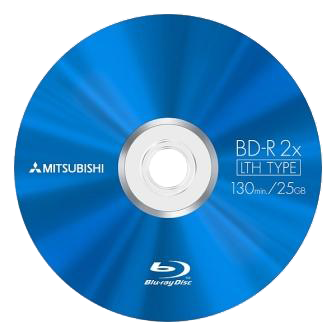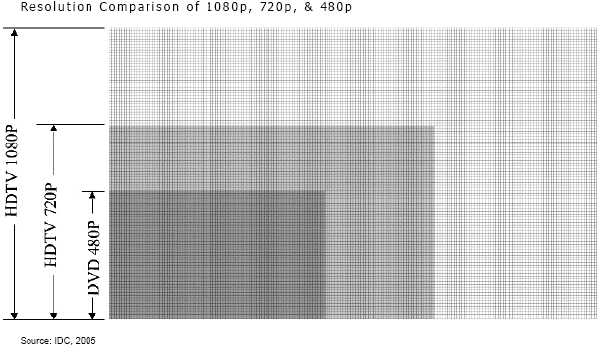In preparation for ESPN’s telecast of Monday Night Football in San Diego, Director of Photography Bob Sloan leads a Sloan productions high definition crew and shoots the helmets of the opposing teams. San Diego hosted the Denver Broncos during ESPN, ABC, and Disney’s 40th year production of the most popular football telecast of each football season. By hiring local qualified production crews in San Diego, ESPN is able to control costs as opposed to traveling a crew across the country. This shot was used in the opening of the Monday Night Countdown show that precedes the actual telecast. Sloan Productions provides professional production crews in San Diego to networks, independent producers, and corporations.
The Importance of Good Makeup
Now that we’re in a high definition video production world, more attention must be paid to the quality of the makeup job and artist. High definition images have much greater resolution than our old NTSC system showing more flaws in the skin; aging, wrinkles, etc. On a recent shoot for a corporate website video client in San Diego, our makeup artist was Melissa Street, www.EpicMakeUP.com. Melissa has been a professional makeup artist for over twenty years and has worked on feature films; Terminator, Aliens, etc. She used a product that I hadn’t seen before that helps keep facial perspiration, (sweat), from ruining the makeup job. The product is a spray that in effect “seals” the pores temporarily. Called Skindinavia Makeup Fixing Spray, it did a great job during our shoot as we had to use heavy lighting to balance the background scene out the window of the office we were working in. Sloan productions has been producing high definition content and website video production in San Diego for over 30 years, www.sloanproductions.com.
Infomercial with Dr. 90210
Director of Photography, Bob Sloan directs camera angles for a recent infomercial production by RW Advertising of Chicago. Bob helped Sean Ryan and Alan Woods of RW block camera angles and engineered the three Sony XDCAM-HD camcorders during the two day shoot in Beverly Hills, California. Photo by Jeff Landie
How to Best Prepare PowerPoint Slides for Video & DVD Production
Many times we have incorporated our client’s PowerPoint slides into their video and DVD productions. Because computer displays and television displays are different, keeping a few things in mind will be of help to both of us.
PowerPoint presentations are optimized for computers. DVDs are optimized for television. There are a number of differences between high-resolution output for computers and low-resolution output for television. Basically, computer resolution is far greater than television’s resolution of 720 x 486 pixels (NTSC). Also, normal televisions at a minimum crop as much as 10% from around the edge (5% from each edge), resulting in a number of consequences when incorporating PowerPoint images into your video production and then to DVD. Keeping the following guidelines in mind when designing your PowerPoint presentation will help insure a good DVD experience as well.
These are as follows:
• Try to use 30 pt fonts or higher as small text may get lost on video.
• Use sans serif (e.g. Arial, Helvetica) bold fonts.
• Use no more than 4 or 5 lines of text per slide.
• Avoid the color red, use darker colors and greens and blues.
• Keep your graphics simple.
• Provide at least a 15% border around the edge.
We realize that these recommendations may seem limiting to you for your live presentation but it helps to be aware of this. In addition, audiences basically prefer simpler graphics. Too much information can cause them to disassociate altogether with the slide.
What is a Blue-ray DVD
Blu-ray, also known as Blu-ray Disc (BD), is the name of a next-generation optical disc format jointly developed by the Blu-ray Disc Association (BDA), a group of the world’s leading consumer electronics, personal computer and media manufacturers (including Apple, Dell, Hitachi, HP, JVC, JVC, Mitsubishi, Panasonic, Pioneer, Philips, Samsung, Sharp, Sony, TDK and Thomson). The format was developed to enable recording, rewriting and playback of high-definition video (HD), as well as storing large amounts of data. The format offers more than five times the storage capacity of traditional DVDs and can hold up to 25GB on a single-layer disc and 50GB on a dual-layer disc. This extra capacity combined with the use of advanced video and audio codecs will offer consumers an unprecedented HD experience.

To Drop or Not to Drop – Drop Frame vs. Non-Drop Frame Timecode
First of all this discussion only matters if you are producing something that needs to be time accurate in NTSC, (standard definition) video. Examples are TV commercials & programs.
Drop Frame and Non-Drop Frame write address positions for specific points on video clips, tapes, and programs differently.
Non-Drop Frame is “frame accurate”, a specific number or address corresponding to each frame of visual media. But in NTSC video, 30 non-drop frames do not equal one second of time. Drop-frame IS time accurate. This can be confusing. Why would you “drop something out” to make something called “timecode” time accurate? For this article I’m not going to go into why this is and instead talk about knowing which to use.
Drop-Frame refers to what I’ll call “time distance” on your video clip, tape, or program. Reading the drop-frame timecode tells you where you are in terms of actual chronological clock time as opposed to how many frames have gone by.
Drop Frame tells time while Non-Drop Frame counts frames.
A good rule of thumb is that if it’s for broadcast television, use drop-frame. Otherwise it doesn’t really matter.
You can shoot in either really but edit your program in drop frame to make it time accurate, but it’s better to be consistent.
Also, there is no difference in quality or content between drop and non-drop timecode. Timecode numbers are dropped not video frames.
Additional resources for this article are;
Pam Malouf-Cundy, who has a very detailed explanation at http://csif.org/html/dropframe.html
And Larry Jordan, Bob Sloan endorsed guru of video production, http://larryjordan.biz/
1080i and 720p, What’s the difference?
If you were painting a rectangular section of fence in 1080i, you would paint from top to bottom, left to right and put two coats on it to make up one frame of video. If you were painting it in 720p you would put one coat on it in the same manner to make the same frame. This is an oversimplification but a fundamental difference.
If the screen were a piece of cloth, in 1080i there would be 1920 threads that run across horizontally, (horizontal resolution), and 1080 threads that go up and down, (vertical resolution). Our 720p piece of cloth has 1,280 threads across, and 720 down. And every time the threads intersect you have a pixel.
It would seem based on this that from a technical standpoint 1080i is a higher resolution picture. Not so. In 1080i only half of the lines are displayed at any one time, the first coat of paint is shown, then the second, and the brush strokes paint in-between each other. “I” is for “interlace”. In 720p all of the lines are displayed progressively, (p for progressive), and in their full brush width, no need to interlace them. The difference is that at any one time in 1080i only half of our 1080 lines, or 540 lines, are competing with 720 lines in 720p.
To the eye, they both look absolutely fabulous and to the untrained eye it is hard to tell the difference. The biggest difference is that because 720p is sequential, complete frame after complete frame and handles action better whereas 1080i is sort of “blurred together”.
Here’s the technical explanation
1080i refers to the number of interlaced pixel scan lines appearing on a screen or 1,080. An interlaced screen has 1,080 vertical pixels by 1,920 horizontal pixels. Interlaced scanning draws the picture on the screen by first filling in all the odd-numbered scan lines then filling in the even-numbered scan lines. Done very quickly, the eye only sees one picture on the television. Progressive scanning fills in all of it’s 720 lines per frame before proceeding to the next frame.
Sony’s Blu-Ray Disc Tecnology Wins the Format War
What are High-definition DVDs?
High-definition DVDs will make watching movies at home even better. With far sharper images, better sound and more features, high-definition will greatly improve home entertainment. There are two formats of high-definition DVD: Blu-ray Disc and HD DVD.
What is the difference between HD DVD and Blu-ray Disc?
HD DVD and Blu-ray Disc are two formats of high-definition DVDs, which will greatly enhance home entertainment. Both formats offer far sharper images, better sound and more features than standard DVDs.
About the decision
Sony’s Blu-Ray has finally won the battle of the high-definition DVD formats with Toshiba announcing it is to axe its rival HD DVD technology. Toshiba announced that after a thorough review of it’s strategy, the company has decided a swift end to the format war.
The two formats have been battling for the growing high-definition share of the £12.3bn a year global home DVD market. Sony has had the upper hand for some time because its PlayStation 3 games console has a built-in Blu-Ray player. Sony has sold more than 10m Blu-Ray units while only about 1m HD DVD players have been sold, mostly in Japan.
Last month Warner Bros, the world’s largest DVD producer, announced it would only release on Blu-Ray, while Disney, MGM, Sony Pictures and Fox have also dumped HD DVD. In addition, Wal-Mart has committed to selling only Blu-ray discs.
What this means to you.
It is my opinion that this will open the gates for producers to produce High Def content and release with the confidence that they are in the accepted format which should promote sales.
Consumers win because they can now purchase a player, (Blu-Ray), with the confiedence that this format will be around for a long time. (At least until the next big technology is accepted and released…).
In a world and industry where formats are multiplying like wildfire, this is a big deal.
HOWEVER…
The current state of Blu-ray for independent producers deal with the hefty licensing fees if we want need to replicate our titles. For the latest information on this, go here: http://www.blu-raydisc.info/faq.php





